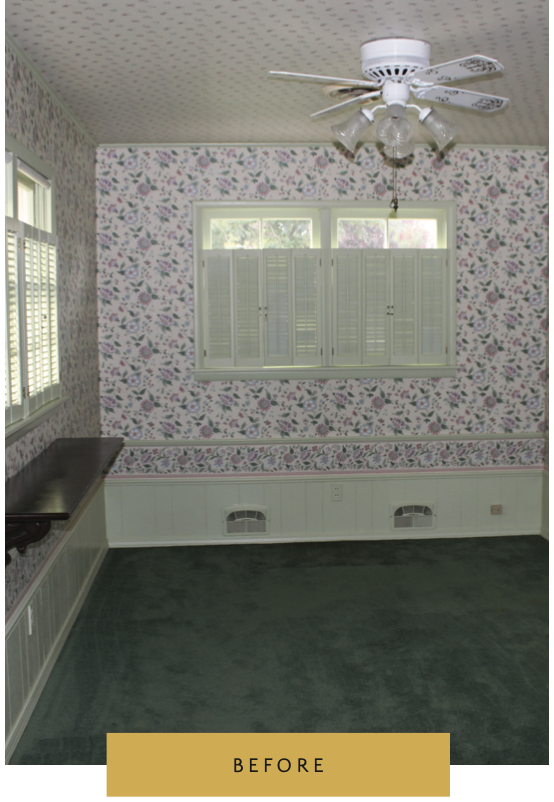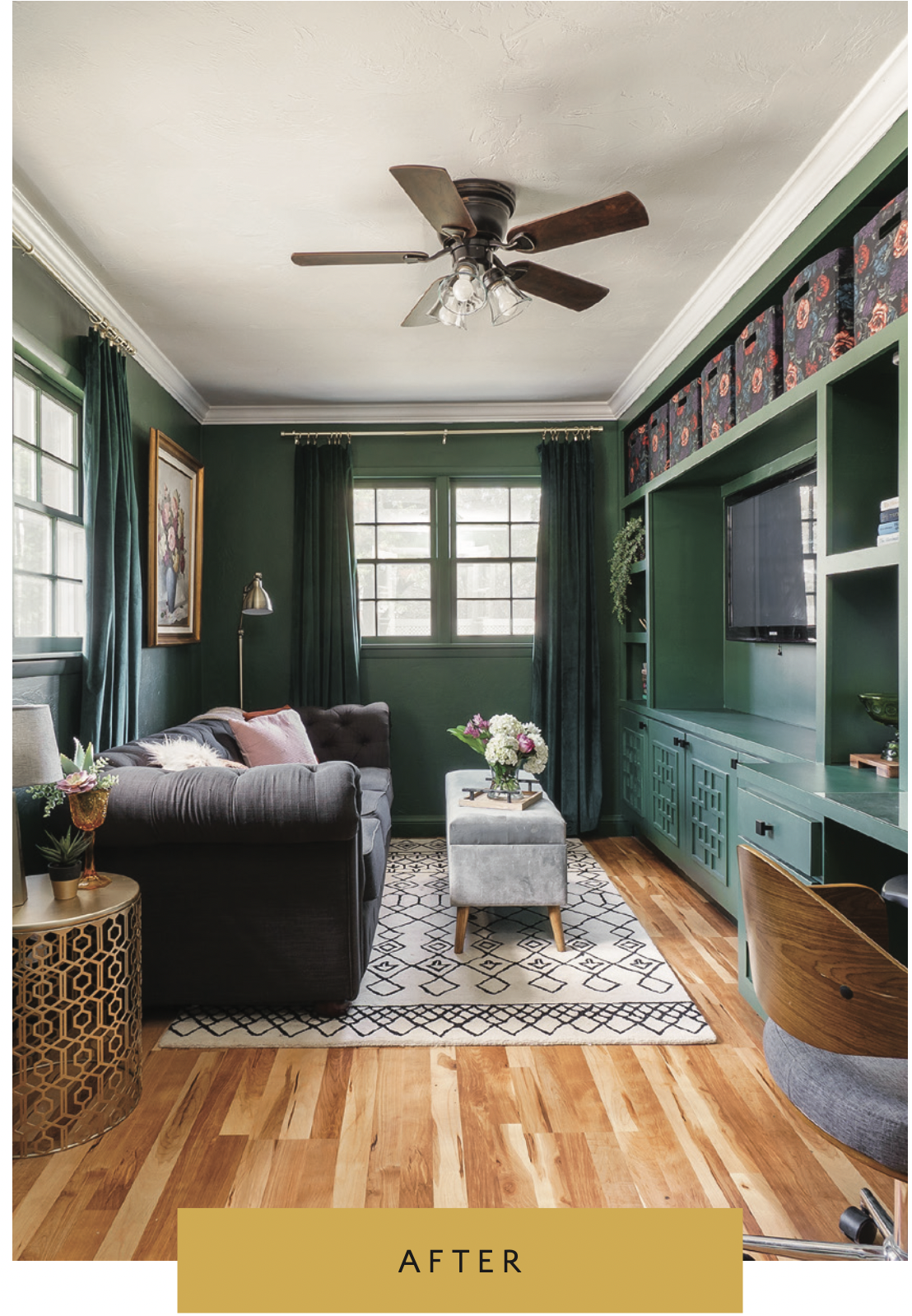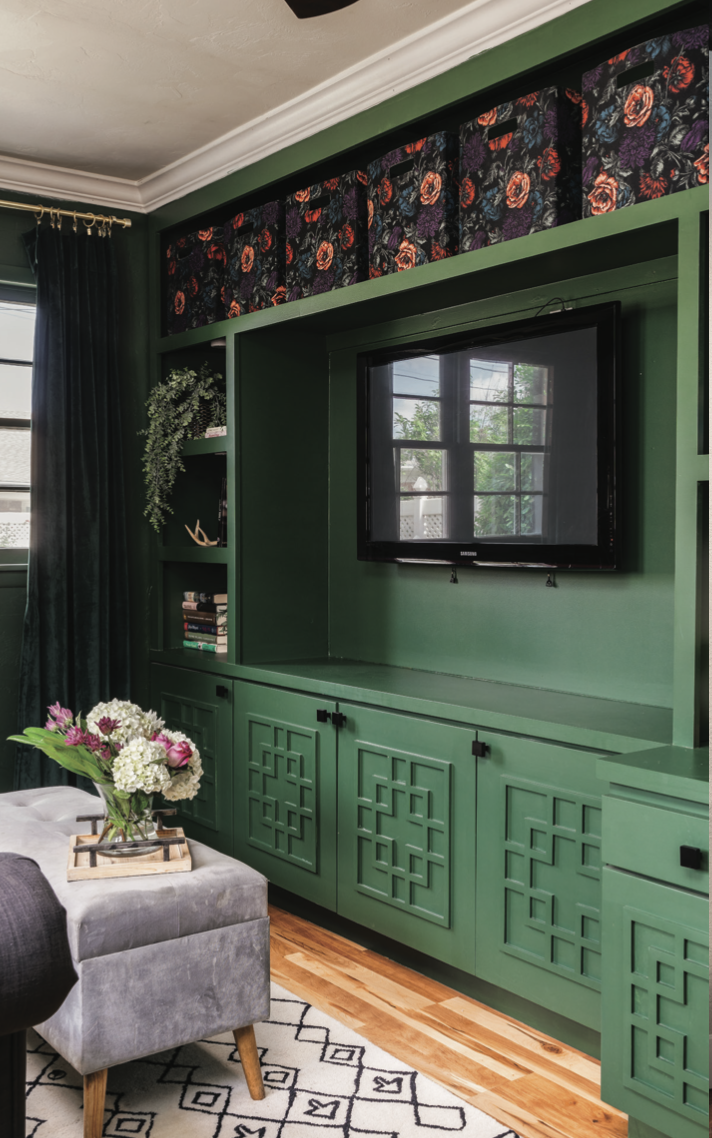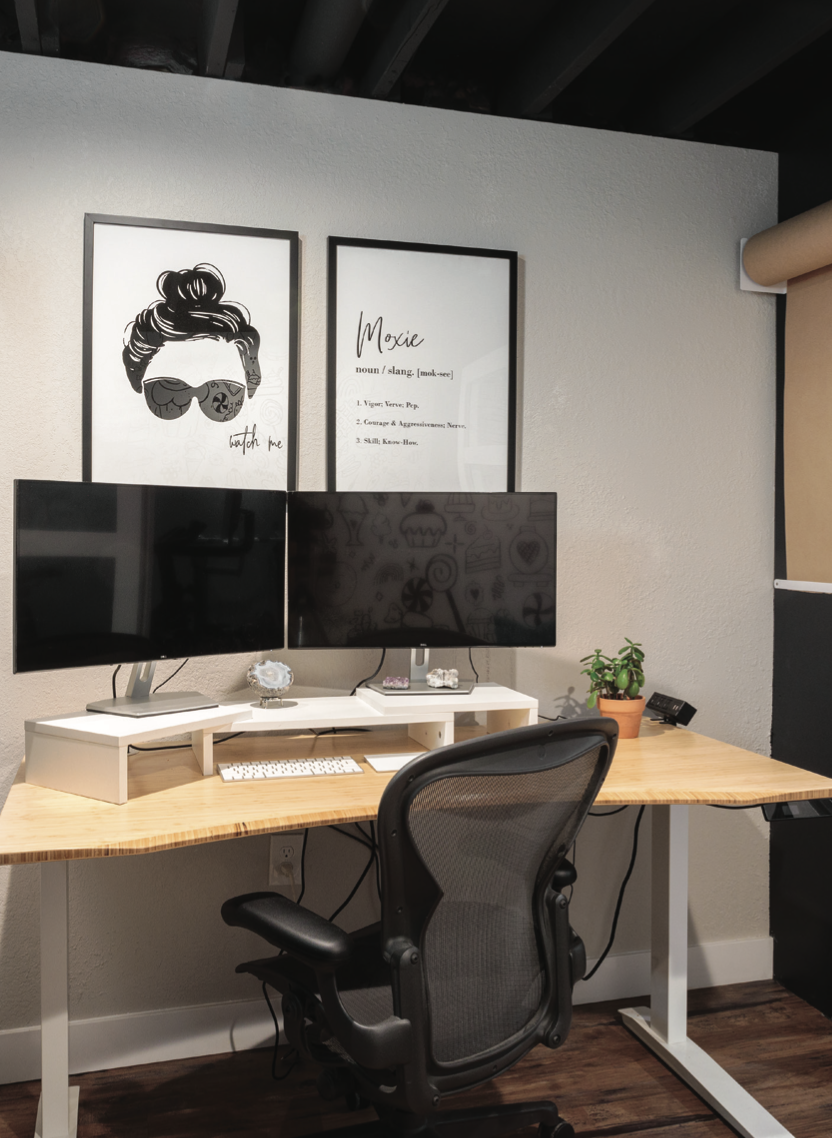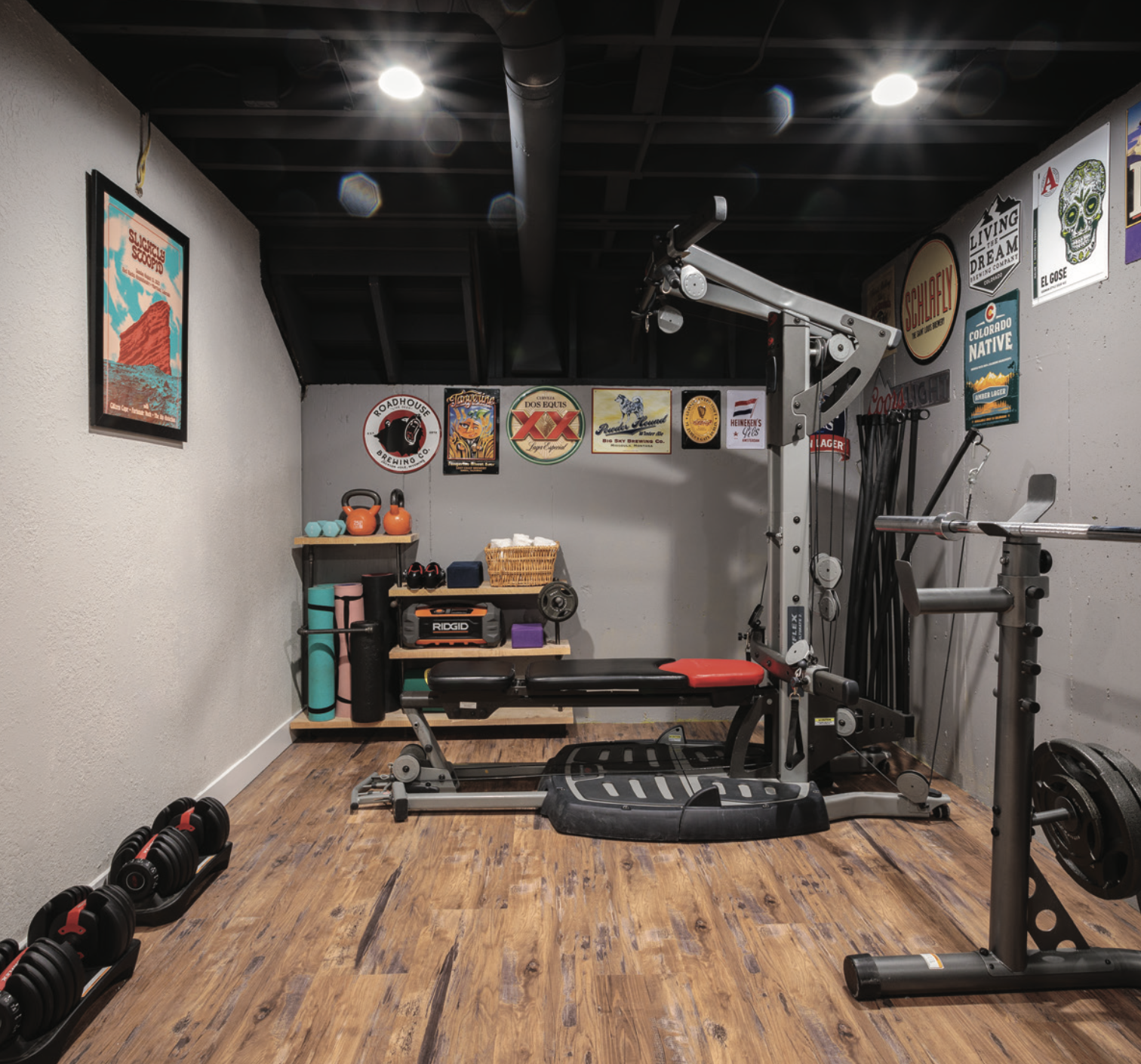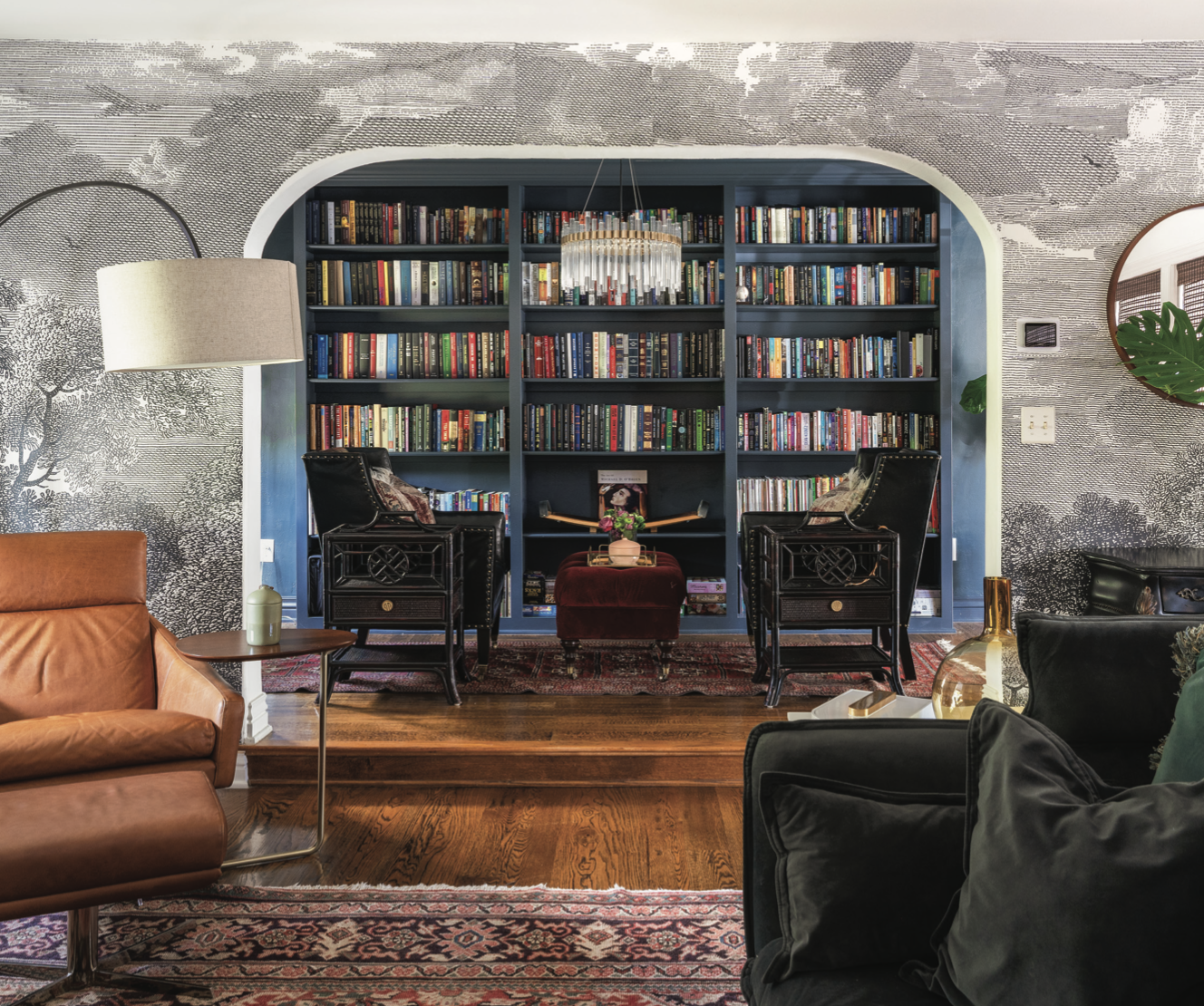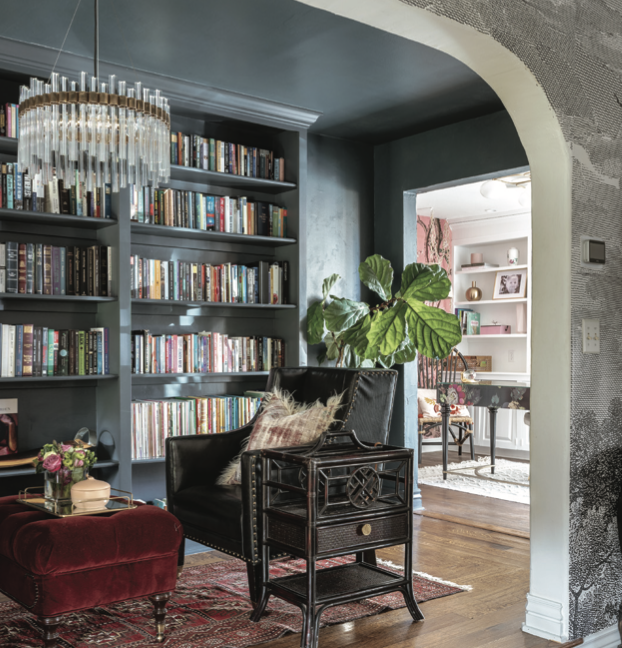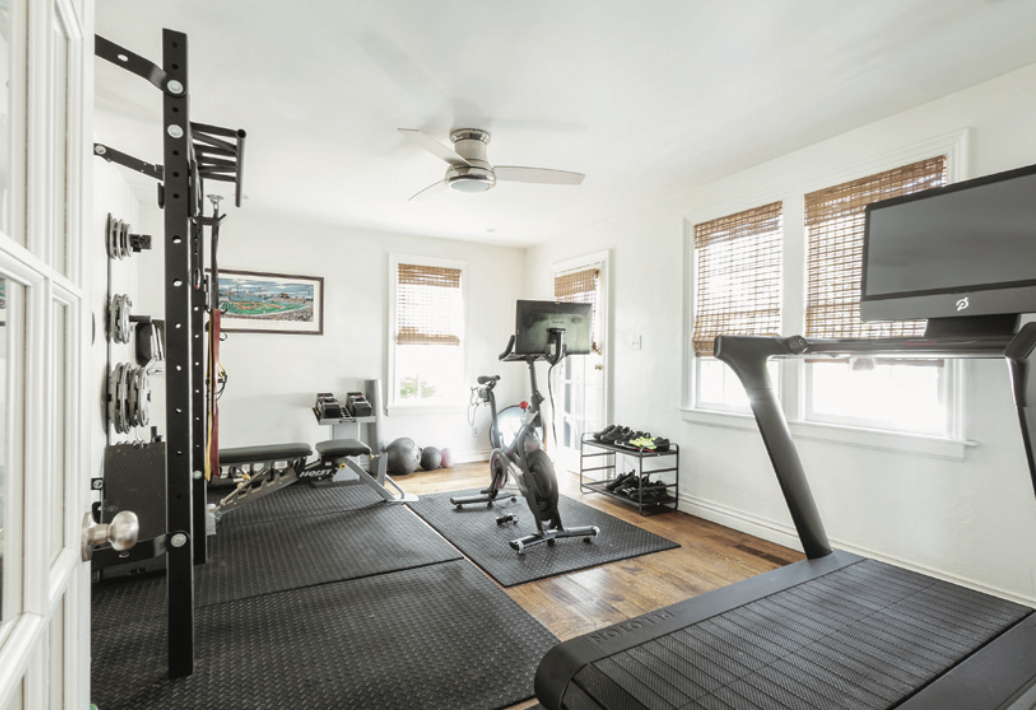THREE WORK FROM HOME SPACES FULL OF CHARACTER
Just as we thought home offices + gyms were going out of style, the pandemic inspired a big-time return. We saw builders adding them back into floor-plans, buyers requesting them when shopping for their next place, and retailers bringing them back into focus with furniture + accessories designed to support those long hours studying, working out + zooming at home!
We're so inspired by these stylish spaces created by West + Main agents across the country!
Below: For the most part this was a DIY project. Gracie removed the wallpaper, textured the walls and ceiling, installed the f looring, and painted the entire room. Her brother in law ,who owns Affinity Woodworks built the dramatic custom built in, where the unique deigned doors are the real show-stoppers!
Above: Before and after of Gracie’s Home Office
“I’ve always been a fan of dark offices and thought that going monochromatic on the look would make it sleek. I wanted to maximize storage and have space to display all of my “office’ items. This is probably the most used space in my house. Although the deep green paint color is very masculine, I tried to girl it up with feminine touches.”
GRACIE'S HOME OFFICE
MATERIALS
FLOORING, PAINT, WALL TEXTURE - $1500
CUSTOM BUILT INS BY AFFINITY WOODWORK - $4500
TOTAL PROJECT: $6,000
Maire Chew’s Office Makeover
West + Main agent Maire Chew wanted her own space to work and feel like she was in an office even while working remote...and she and her husband also wanted a gym downstairs to be able to workout at home.
"The goal for the office design was maximize space and make it feel like an office inside of a co-working space feels which is modern, light hearted and creative," said Maire. "And the goal for the gym was for it to feel organized, functional and to be able to do as many types of workouts as possible. This currently includes cycling, yoga and weights! It's wonderful."
Major perk is Maire's husband has his own general contracting business (Urban Oak Builders) so we were able to maximize the budget in that way too!
MAIRE'S BASEMENT OFFICE + GYM
FLOORS, DRYWALL, PAINT - $8000 STANDING DESK + CHAIR - $1500 DECOR - $500
LABOR-$0/DIY
TOTAL PROJECT: $10,000 MARY'S OFFICE + GYM
BOOKSHELF - $1100
WALL, CONSTRUCTION, ELECTRICAL, FRAMING, PAINTING - $4500
REFRESH WOOD FLOORS - $600 ANTHROPOLOGY MURAL - $400 CB2 CHANDELIER - $350
TOTAL PROJECT: $6950
Mary Hatch’s Make or Break Office Space
"This house was a make me move house," admitted West + Main OK founder Mary Hatch. "I went on a listing appointment to list the home and made a verbal offer before I left the appointment."
"We lived one block away in a Historic Cape Cod Bungalow, but I had also loved the architecture of a Tall English Tudor!"
The home was a built in 1931 and the floorplan had a large addition in the back of the home the was a large bonus room that Mary's family did not need. Their goal was to take the space and divide it into some great f lexible fun spaces that they could enjoy.
"The home had a great open arch that was already there so we decided to put a wall up with floor to ceiling shelves to create an open library," said Mary.
"We painted the walls and shelves in the same color for a moody look (Blue Note by Benjamin Moore) and the entry wall wallpaper was actually an Anthropology mural."
Behind the wall is a home gym, home office and a full bathroom. Mary and her family couldn't be more happy with the new footprint and all the fun spaces they created!
If there is a home that you would like more information about, if you are considering selling a property, or if you have questions about the housing market in your neighborhood, please reach out. We’re here to help.


